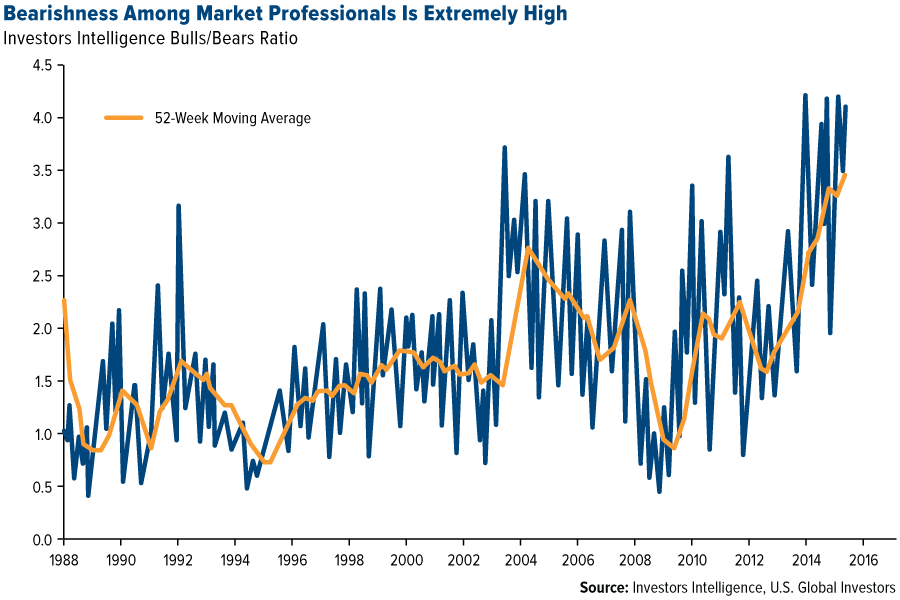No matter what profession you’re in, no matter what sport or hobby is important to you, chances are good you keep track of what the top professionals are up to. More often than not, they’re the smartest ones in the room. They’re the innovators, the thought leaders, and it pays to keep up with their decisions, behavior and opinions.
This is especially true in investing.
The most recent chief executive officer to receive such compensation is American Airline’s Doug Parker.
Anyone can give you tips on how to get ahead in the market. Maybe you’ve even dispensed some sage advice to friends and family yourself over the years. No offense to you, your cousin or your neighbor, but before making any trading decisions, it’s usually constructive to first figure out where the smart money is headed.
But where do you go for such data? A good place to start is the bull/bear ratio.
Since 1987, Investors Intelligence has released such an indicator on a weekly basis that tracks the market sentiment of professional traders. High readings indicate bearishness; low readings, bullishness.
Currently, the ratio’s 52-week moving average stands at a record high of 3.5.

For the past decade and a half, this indicator has been more-or-less accurate at following the peaks and valleys of the S&P 500 Index. When the index plunged dramatically in 2008-2009 with the rest of the market, pro investors, motivated by cheap stocks and the huge potential for growth, became bullish.
The reverse is also true. The bull run we’re now in is six years old—one of the longest in U.S. history —and domestic equities are at record highs. What’s helped push the market higher this cycle are low interest rates and billions in dividends. For the first time last year, U.S. companies gave back $1 trillion to investors in stock buybacks and dividends, and even more is expected this year.
As a result, some top traders seem to be anticipating the next shoe to drop.

So what does this mean? Of course, there’s no way to predict what will happen in the future with full certainty.
Having said that, it might be time to rebalance your portfolio by taking some profits from the best-performing assets and reallocating them into assets that are out of favor right now—or better yet, into a product that has a time-tested history of no drama. Research has shown that a systematic approach to asset allocation with regular rebalancing might lower your risk and enhance your returns.
For 20 consecutive years, our Near-Term Tax Free Fund (NEARX), which invests in short-term municipal bonds, has delivered positive total returns in both weak and strong economic climates, no matter if the pros are bearish or bullish.

The fund holds four stars overall from Morningstar, among 179 Municipal National Short-Term funds as of 3/31/2015, based on risk-adjusted return.



